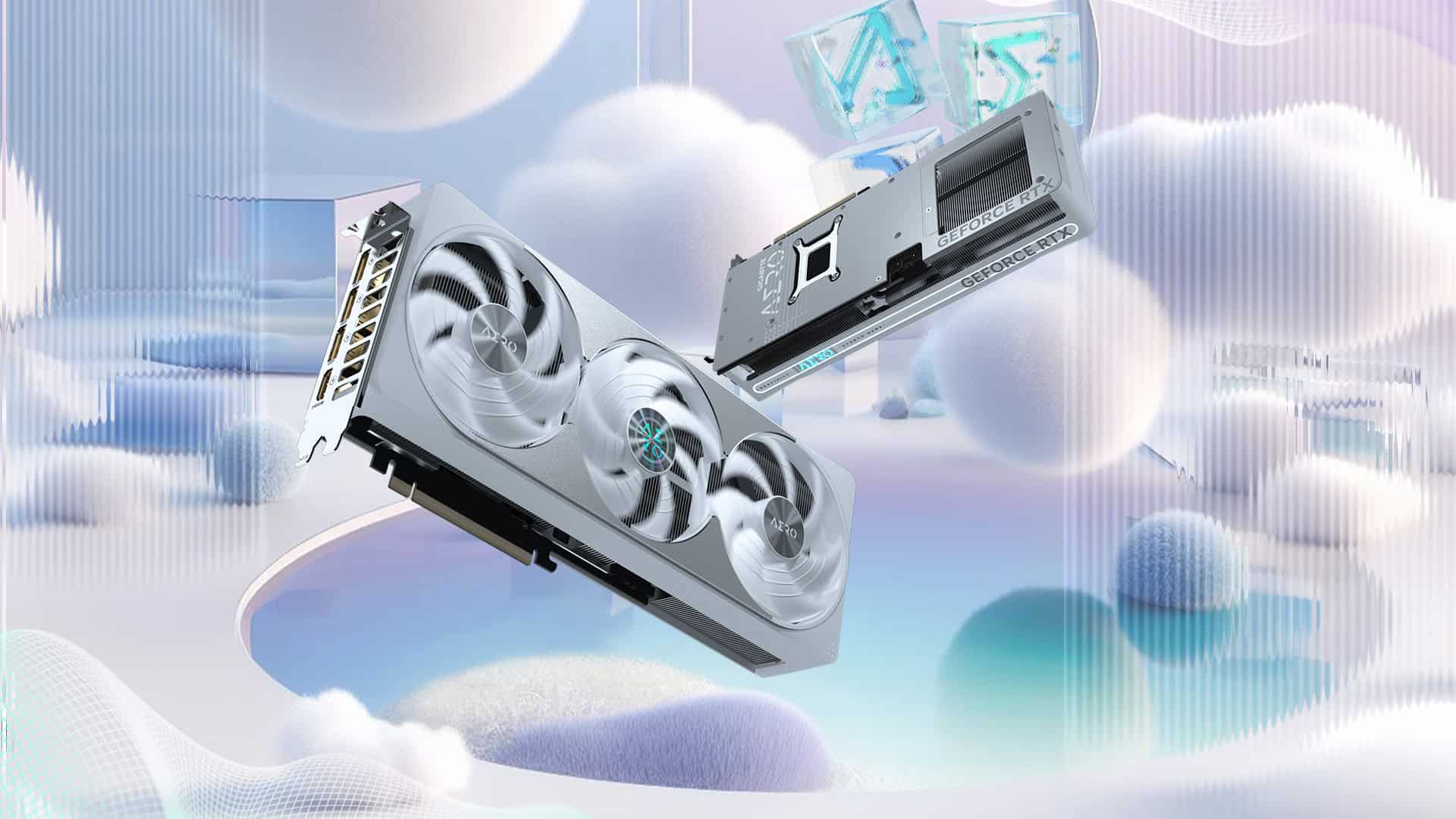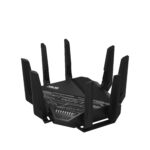Recently, Gigabyte’s pricing for GeForce RTX 5080 series were posted to a retailer and for the most part, you’re looking at a hefty markup (above the $999 quoted by NVIDIA as the MSRP during CES 2025). Nvidia’s GeForce RTX graphics cards have gained a reputation for their cutting-edge performance. Yet, recent market trends show a concerning pattern. Custom models of the new RTX 5080 are appearing at prices well above Nvidia’s suggested retail price (MSRP), despite the company’s efforts to set reasonable price points.

According to a post on Reddit, here’s the price breakdown in Europe (with the price in USD next to it):
| Model | Price (€) | Price (without VAT, €) | Price (USD) | Price (without VAT, USD) |
|---|---|---|---|---|
| GIGABYTE GeForce RTX 5080 AORUS Xtreme WaterForce | 1,669.00 | 1,329.88 | $1,804.52 | $1,436.27 |
| GIGABYTE GeForce RTX 5080 AORUS Xtreme WaterForce WB | 1,639.00 | 1,305.98 | $1,770.12 | $1,410.26 |
| GIGABYTE GeForce RTX 5080 AORUS Master ICE | 1,559.00 | 1,242.23 | $1,683.72 | $1,341.81 |
| GIGABYTE GeForce RTX 5080 AORUS Master | 1,529.00 | 1,218.33 | $1,651.32 | $1,315.64 |
| GIGABYTE GeForce RTX 5080 AERO OC | 1,419.00 | 1,130.68 | $1,532.52 | $1,221.13 |
| GIGABYTE GeForce RTX 5080 GAMING OC | 1,419.00 | 1,130.68 | $1,532.52 | $1,221.13 |
| GIGABYTE GeForce RTX 5080 WindForce 3 OC | 1,229.00 | 979.28 | $1,327.32 | $1,057.62 |
Important Note: The actual price in USD will depend on the current exchange rate and any fees your bank or payment provider may charge.
This pricing discrepancy affects consumers looking to upgrade their gaming rigs or build new systems. Gigabyte, a major graphics card manufacturer, has listed several of its RTX 5080 variants at prices significantly higher than Nvidia’s MSRP. This trend is not unique to the RTX 5080 and extends to other models in the GeForce lineup.
The gap between announced and actual retail prices raises questions about the true cost of next-generation graphics technology. Gamers and PC enthusiasts may need to adjust their budgets or consider alternative options. The situation highlights the complex interplay between manufacturer pricing strategies and market demand for high-performance graphics cards.
The Reality of GPU Prices
The dream of snagging a shiny new graphics card at NVIDIA’s Manufacturer Suggested Retail Price (MSRP) is becoming just that – a dream. It’s like trying to catch a unicorn: you might hear whispers and legends, but actually seeing one in the wild (or in your PC) is incredibly rare. Let’s break down why.
The MSRP Illusion
NVIDIA sets an MSRP for its graphics cards, a price that’s supposed to represent a fair deal for both consumers and retailers. However, this number often has little to do with the actual cost you’ll pay. It’s like a starting point in a high-stakes negotiation, and unfortunately, you don’t have much leverage.
The Price-Inflating Factors
Several forces conspire to drive up the price of those pixel-pushing powerhouses:
- **Supply and Demand:** It’s the oldest story in economics. When there are more people who want a product than there are products available, prices go up. This is especially true for new graphics cards, where the initial supply is often limited.
- **Component Shortages:** Graphics cards are complex beasts, relying on a delicate ecosystem of components. When there are shortages of key parts like silicon, memory modules, or even the materials to make them, production costs rise, and those costs are passed on to you.
- **The Greedy Middleman:** Retailers and distributors often add their own markup to graphics cards, especially when they know they can get away with it. This is particularly true for in-demand models.
- **The Scalper Problem:** Automated bots and opportunistic individuals buy up large quantities of graphics cards as soon as they’re released, only to resell them at inflated prices on third-party marketplaces. It’s a frustrating reality for gamers who just want to upgrade their rigs.
- **Tariffs and Trade Wars:** Global trade disputes and tariffs can add unexpected costs to the manufacturing and shipping of graphics cards, ultimately impacting the final price you pay.
The RTX 50 Series: A Case Study
The recent release of the NVIDIA GeForce RTX 50 series provides a perfect example of this pricing phenomenon. While NVIDIA might suggest a starting price, the reality on the ground is quite different. Take a look at these European prices for the RTX 5080:
| Model | Price (€) | Price (without VAT, €) | Price (USD) | Price (without VAT, USD) |
|---|---|---|---|---|
| GIGABYTE GeForce RTX 5080 AORUS Xtreme WaterForce | 1,669.00 | 1,329.88 | $1,804.52 | $1,436.27 |
| GIGABYTE GeForce RTX 5080 AORUS Xtreme WaterForce WB | 1,639.00 | 1,305.98 | $1,770.12 | $1,410.26 |
| GIGABYTE GeForce RTX 5080 AORUS Master ICE | 1,559.00 | 1,242.23 | $1,683.72 | $1,341.81 |
| GIGABYTE GeForce RTX 5080 AORUS Master | 1,529.00 | 1,218.33 | $1,651.32 | $1,315.64 |
| GIGABYTE GeForce RTX 5080 AERO OC | 1,419.00 | 1,130.68 | $1,532.52 | $1,221.13 |
| GIGABYTE GeForce RTX 5080 GAMING OC | 1,419.00 | 1,130.68 | $1,532.52 | $1,221.13 |
| GIGABYTE GeForce RTX 5080 WindForce 3 OC | 1,229.00 | 979.28 | $1,327.32 | $1,057.62 |
As you can see, even the most basic RTX 5080 model is significantly pricier than NVIDIA’s rumored MSRP. And if you want a high-end version with all the bells and whistles? Be prepared to shell out a hefty premium.
Navigating the GPU Market
So, what’s a gamer to do? Accepting defeat and buying a scalped card shouldn’t be your only option. Here are a few tips to navigate this challenging market:
- **Stay Informed:** Keep an eye on tech news and social media for announcements about restocks and new releases. The more you know, the better prepared you’ll be to act quickly.
- **Be Persistent:** Don’t give up after a few failed attempts. Persistence is key in this competitive market. Keep checking retailer websites and signing up for email notifications.
- **Consider Alternatives:** If you’re not in a rush, you might consider waiting for prices to stabilize or looking at older generation cards that still offer excellent performance.
- **Think Outside the Box:** Pre-built PCs sometimes offer better value for your money, as manufacturers often have access to GPUs at lower prices. Or, consider exploring cloud gaming services as a temporary solution.
Ultimately, getting a graphics card at MSRP requires patience, persistence, and a bit of luck. But with the right strategy and a bit of effort, you can increase your chances of scoring that elusive deal.
Key Takeaways
- GeForce RTX cards are selling above Nvidia’s announced MSRP
- Custom models from manufacturers like Gigabyte show significant price increases
- Consumers should expect to pay more than the advertised price for new RTX cards
Assessment of Market Pricing for Nvidia RTX Cards
The graphics card market is highly volatile, with prices frequently changing due to factors like global chip shortages and the demand for the latest technology. Understanding these influences can help users make informed purchasing decisions and avoid overspending.
Nvidia’s RTX graphics cards show significant price variations across models and retailers. These fluctuations impact consumer choices and the overall GPU market landscape.
Pricing Trends Across Geforce Models
The Geforce RTX 5080 exemplifies the pricing challenges in the current GPU market. While Nvidia set a reasonable MSRP, many custom models from manufacturers like Gigabyte are listed at significantly higher prices. This trend extends to other RTX models as well.
RTX 4090 cards have seen particularly steep markups. Some retailers list these cards at nearly $2,000, far above their initial MSRP.
Lower-tier models like the RTX 4060 Ti have shown more stable pricing. These cards often stick closer to their announced MSRPs, providing better value for budget-conscious buyers.
Comparison to Previous Generations
Current RTX 50-series and 40-series GPUs generally command higher prices than their predecessors. The RTX 4080, for instance, launched at a higher price point than the RTX 3080.
However, some older models have seen significant price drops. The RTX 3070 Ti and RTX 3070 decreased in price by 38% and 35% respectively over the past year.
Price-to-performance ratios have shifted. Newer cards offer improved frame rates and features, but often at a premium compared to previous generation equivalents.
Expected Impact on Consumers
High prices for top-tier RTX cards may push some consumers towards mid-range options. The RTX 4060 Ti and similar models could see increased demand due to their more accessible pricing.
Buyers may need to wait longer for price stabilization on newer models. Historical trends suggest that prices often decrease several months after initial release.
The used GPU market might become more attractive for budget-conscious gamers. Previous generation cards like the RTX 3080 could offer good value as their prices continue to fall.
Technological Developments and Market Reactions
Nvidia’s CES 2025 launch of the RTX 50-series GPUs marks significant advancements in graphics technology. The new cards promise enhanced performance and features, sparking discussions about their impact on gaming and the competitive landscape.
Innovations in RTX 50-Series
The RTX 5090 and RTX 5080 represent Nvidia’s latest push in GPU technology. The RTX 5090 boasts 32GB of GDDR7 memory and 21,760 CUDA cores, doubling the performance of its predecessor.
These advancements build on Nvidia’s previous successes with ray tracing and AI-enhanced graphics. The new architecture aims to overcome the limitations of Moore’s Law, delivering substantial performance gains.
Key features include:
- Improved ray tracing capabilities
- Enhanced AI-driven upscaling
- Higher memory bandwidth
- Increased power efficiency
Gaming and Graphics Performance
The RTX 50-series GPUs promise significant improvements in gaming performance. Titles like Cyberpunk 2077 and Alan Wake 2 are expected to showcase the cards’ capabilities.
Early benchmarks suggest:
- 4K gaming at 144+ FPS in demanding titles
- Ray tracing with minimal performance impact
- Faster load times due to improved memory speeds
These enhancements could redefine gaming experiences, enabling more realistic graphics and smoother gameplay across various genres.
Competitive Landscape
Nvidia’s launch puts pressure on AMD’s Radeon lineup. The RX 7900 XTX and XT models now face stiffer competition.
AMD’s response may include:
- Accelerated development of next-gen GPUs
- Aggressive pricing strategies
- Focus on efficiency and value propositions
The market reaction to Nvidia’s announcements has been mixed. While some analysts praise the technological advancements, others question the impact on AI and autonomous driving sectors.
This competition could benefit consumers through:
- More frequent product releases
- Potentially lower prices in the mid-range market
- Increased focus on software and feature development







